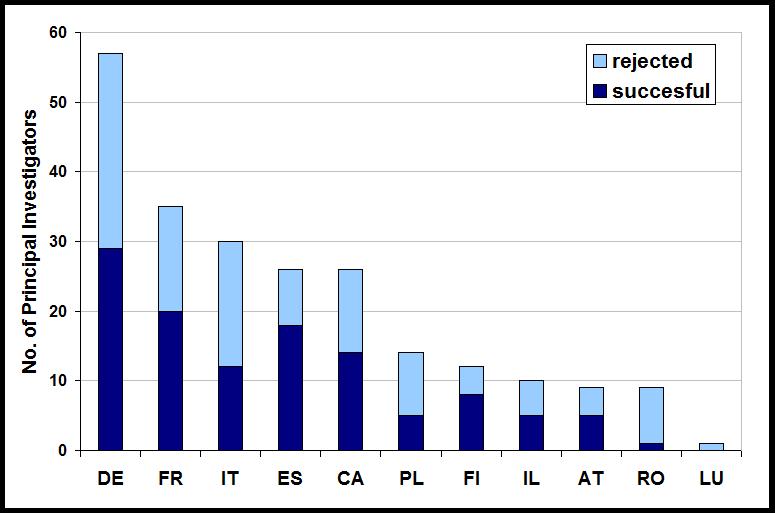Call statistics of the 2010 "Mental Disorders" call
The success rates of submitted proposals as well as the country of origin and the gender of the applicants involved in the JTC2010 “Mental Disorders” are outlined below.
Success rates of submitted proposals
Success rates of submitted proposals
The application procedure consisted of two stages: stage I “pre-proposal selection” and stage II “full proposal selection”, for details see Implementation of the call . Overall, 11% of all pre-proposals were eventually funded.
Success rates are summarized in the table below.
| Stage I: Pre-proposal | Stage II: Full proposals | Funded projects | |
|---|---|---|---|
| No. of proposals | 103* | 32 | 11 |
| Principal Investigators involved | 402 | 129 | 47 |
| - overall funding requested in € | 80 Mio | 26.7 Mio | 10 Mio |
| Proposal success rate | 31% | 34% |
*one pre-proposal was excluded for formal reasons
Country of origin and gender distribution of the applicants
The number of successful Principal Investigators per country is outlined with regard to pre-proposals (Figure 1a) and with regard to full proposals (Figure 1b) submitted to this call.


Coordinators of pre-proposals and full proposals applied from the countries below:
| Pre-proposals submitted: | Full proposals funded: |
|---|---|
| Germany: 18 | Germany: 7 |
| Italy: 10 | Spain: 1 |
| Canada: 7 | France: 1 |
| Spain: 6 | Poland: 1 |
| France: 4 | |
| Poland: 5 | |
| Israel: 2 | |
| Austria: 2 | |
| Romania: 3 |
Gender distribution
Pre-proposals: 27% of all Principal Investigators involved in the pre-proposals submitted to this call were female; and 33% of the coordinators were female.
Full proposals: 25% of all Principal Investigators involved in the full proposals submitted to this call were female; and 31% the coordinators were female.
Funded projects: In the funded projects, 19% of the Principal Investigators and 20% of the coordinators were female.